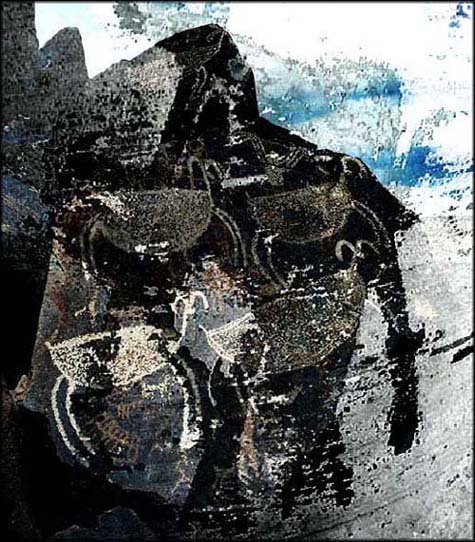
How many species of animals disappeared during the long course of the Upper Paleolithic? What effect did this have on the development of art? The loss of living models creates rituals in their place. Perhaps this is why very late at night he would sit by his bed in front of an oil lamp so dim that it was difficult to tell whether it was burning or not. And with a tattered court robe thrown over his shoulders and an old court cap pulled down to his ears, cave paintings are palimpsests, painted over over centuries. Later, in countries colonized by Christianity, pagan altars were buried beneath the foundation of churches. Westminster Abbey was built on the site of a Temple to Apollo. Who did the pagans bury beneath their altars, smothering aboriginal gods?
To an archaeologist, down is back; to an Indian of the American Southwest, up is back. Like with the ancient Hebrews and Greeks, mountains are the home of their gods. "On the sacred mountain with a god I walk," sings the Navajo Night Chant.
Where chants sing mountains walk. "Mountains' walking is just like human walking. Accordingly, do not doubt mountains' walking even though it does not look the same as human walking." Striding like warriors out of the past, tatooed with symbols and disguised as the mountain itself, "the function of rock is to instill fear into the countryside."
For the Master of Animals, the Creator of the Universe, for artists and poets too, knowledge conceives the absence of cause. Not sympathetic magic, or cosmic ontology, but the turbulence we experience as time.
A woman is speaking in a place of rocks.
Her voice is the water of that place
and founds the time there.